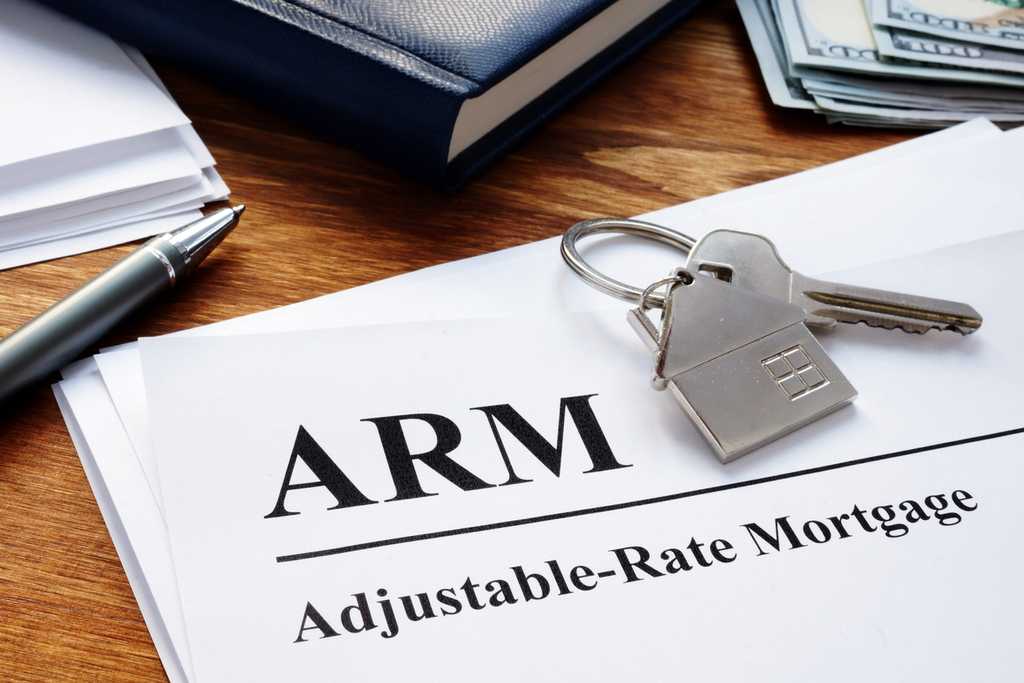One of the biggest financial decisions you’ll probably make is purchasing a home. Aside from choosing your ideal location and the number of bedrooms you want, the topic of financing needs to come early in your home buying process. The type of mortgage you ultimately go will affect how much you will pay in interest and fees over.
One type of mortgage you can choose from is an adjustable-rate mortgage, or ARM. To help you with your decision making process, we outline exactly what an ARM is and whether it’s the right type of mortgage for you.
What Is an Adjustable-Rate Mortgage (ARM)?
An adjustable-rate mortgage, or ARM, is a type of home loan that’s based on a variable, or adjustable interest rate. In most cases, the initial interest rate for an ARM is fixed for a predetermined period then will fluctuate in intervals (usually annually or monthly). In other words, the interest rate can change and be applied to your mortgage in agreed-upon intervals.
How Does An Adjustable-Rate Mortgage Work?
An ARM has an initial interest rate or monthly payment that tends to be lower compared to fixed-rate mortgages. Once the initial period is over, the interest rate (and by extension your monthly payments) will fluctuate. This rate is based on an index or benchmark and a spread, known as the ARM margin. This means your rate may go up or down throughout the life of your loan depending on the rate’s benchmark.
When you sign your loan documents, you’ll notice that the lender will outline a cap structure for your loan. These are guidelines or stipulations that the lender imposes as to the maximum you’ll be charged in interest. You should receive notifications throughout your loan as to what your new adjusted rate should be.
Different Types Of Adjustable-Rate Mortgages
The three main types of ARMs are interest-only (IO), hybrid, and payment-option.
Interest-Only
An interest-only ARM means you’ll be paying interest on your mortgage on an agreed-upon timeframe, typically three to 10 years. When the interest-only period is over, you’ll need to start paying back the interest and principal.
An IO loan is best suited for those who want to free up their cash flow for other uses such as purchasing furniture or making small changes to their home. While the initial payment period is lower, you will most likely be paying higher payments after the initial loan period.
Hybrid
Hybrid adjustable mortgages are arguably the most popular type of ARM, offering both a fixed and adjustable-rate period. You’ll have a fixed rate period at the beginning — most commonly for five or 10 years — then the rate will fluctuate periodically.
The type of hybrid loan you’ll see with lenders comes with two numbers. The first one is the number of years the fixed rate is applicable for, and the second one refers to the frequency of when the variable rate will fluctuate.
For example, if you take out a 5/1 ARM, then your fixed rate period will last for five years, with a variable rate adjusting each year after that time. Or for a 10/6 ARM, your fixed rate period is 10 years, followed by variable rate adjustments every six months.
Payment-Option
Borrowers can choose from different payment methods with this type of ARM, which includes interest-only payments, principal and interest payments, or an agreed upon amount that may not cover either.
This option may be a great choice for those who want more flexibility in their monthly mortgage payments, but your interest charges could be higher compared to other types of loans.
How Lenders Determine Variable Rate on ARMs
Like mentioned above, lenders determine the variable interest rates for ARMs based on indexes or benchmarks. These economic indicators are used to adjust the rate up or down and are measured by basis points.
Depending on the lender, the following are the commonly used indexes:
- Secured Overnight Financing Rate (SOFR): This index replaced the commonly used LIBOR and used to be called the broad Treasuries financing rate. SOFR measures the cost for financial institutions to borrow cash on a short term (more specifically, overnight) basis. The higher the borrowing costs, the higher your interest rate could be.
- 11th District Cost of Funds Index (COFI): This is an index that is the average rate the 11th Federal Home Loan Bank District pays for consumer checking and savings accounts
- The 1-year constant maturity Treasury index: This index is typically what most mortgage lenders use to determine their ARM rates, with rates stemming from Treasury bonds.
Keep in mind that the lenders will also add on a margin to the indexes it uses to determine variable rates. The martin is a percentage your lender uses throughout your loan.
Lenders also have caps on how much it can increase your rate.
There are two main types:
- Periodic cap: The limit on the rate increases from one rate adjustment period to another.
- Ceiling or lifetime cap: The limit your rate can go up or down throughout the life of your loan.
To understand your specific rate and what you could be paying, check with your lender.
Adjustable-Rate Mortgage Vs. Fixed-Rate Mortgage
Fixed-rate mortgages offer the same interest rate throughout the mortgage, which could be anywhere from 10 to 30 years. These types of mortgages usually have higher rates than the initial ones offered by ARMs.
However, since fixed-rate loans don’t fluctuate, it can be the safer bet since borrowers won’t have to worry about rising interest rates. It might also be a better choice since monthly payments remain the same. That way, it may make it easier for you to budget for housing payments, instead of worrying about fluctuating ones.
Is an Adjustable-Rate Mortgage Right for You?
Getting an adjustable-rate mortgage may be a smart choice if you only want to keep a mortgage for a short period of time to take advantage of potentially lower rates. It’s also best for those who can handle fluctuating rates but don’t plan on keeping the loan for the long term.
Even with fluctuating interest rates, the lender does put caps, so you’ll know the maximum amount the rates or your monthly payments will increase at any given time. However, if you prefer the security of knowing exactly what you’ll be paying in mortgage payments each month, you may be better off going with a fixed-rate loan.

